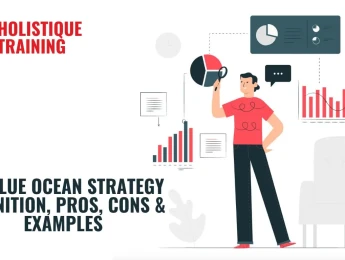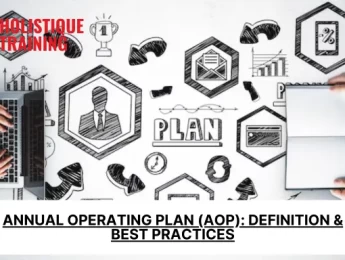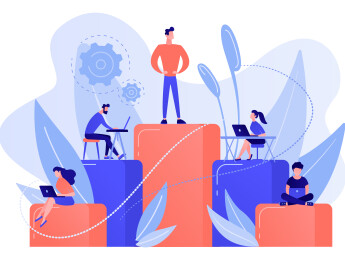- Table of Contents
- What Is Job Simplification?
- Advantages of Job Simplification
- Increased Efficiency and Streamlined Workflow
- Reduced Training Time and Faster Onboarding
- Enhanced Job Satisfaction and Employee Engagement
- Minimised Errors and Rework, Saving Costs
- Flexibility and Adaptability in the Face of Change
- Boosted Team Collaboration and Communication
- Improved Work-Life Balance
- Steps to Apply Job Simplification Procedures in Your Company
- 1. Identify Job Roles for Simplification
- 2. Gather Employee Input
- 3. Task Analysis
- 4. Redesign Workflow
- 5. Develop Clear Job Descriptions
- 6. Training and Development
- 7. Monitor and Adjust
- 8. Foster a Culture of Continuous Improvement
- How Is AI Affecting Job Simplification?
- Data-Driven Job Analysis
- Intelligent Automation
- Personalised Task Assignments
- Continuous Improvement through Real-Time Feedback
- Predictive Analytics for Future Optimisation
- Ethical Implications of AI in Job Simplification
- Bias and Fairness
- Transparency and Accountability
- Job Displacement and Employee Well-being
- Data Privacy and Confidentiality
- Accountability for AI Decisions
- Mitigating Technological Unemployment
- Conclusion
Introduction
Efficiency and productivity are the lifeblood of successful businesses. To achieve these goals, organisations are constantly seeking innovative approaches. Job simplification, a management technique focused on optimising job roles, has emerged as a powerful solution. In this blog post, we will delve into the concept of job simplification, its advantages, and practical steps to implement it within your company. Furthermore, we will explore the transformative impact of artificial intelligence (AI) on job simplification and its potential to revolutionise workforce optimisation.
What Is Job Simplification?
Job simplification is a management technique that aims to simplify complex job roles by breaking them down into smaller, more manageable tasks. This process involves carefully analysing each job's components, identifying redundant or unnecessary elements, and restructuring the workflow to eliminate inefficiencies. The primary objective of job simplification is to optimise workforce performance, reduce the likelihood of errors, and enhance overall productivity.
Advantages of Job Simplification
With a clear understanding of what job simplification entails, let's now explore the myriad advantages it brings to organisations aiming to streamline their operations and improve overall efficiency:
Increased Efficiency and Streamlined Workflow
Breaking down complex job roles into simpler tasks has a profound impact on the efficiency of an organisation. When employees can focus on specific responsibilities without the burden of multifaceted roles, they can dedicate their time and energy more effectively. This focused approach results in a streamlined workflow where tasks move seamlessly from one stage to another. The reduced complexity enhances the precision and speed of task execution, translating into higher overall efficiency for the entire organisation.
Reduced Training Time and Faster Onboarding
Simplified job roles significantly shorten the learning curve for new employees. Clear, straightforward responsibilities are easier to understand and grasp. Consequently, the onboarding process becomes more efficient as new hires can swiftly comprehend their roles and responsibilities. In traditional, complex job structures, new employees might take weeks or even months to fully understand their duties. With job simplification, they can become productive contributors to the team in a much shorter span, saving valuable time and resources for the organisation.
Enhanced Job Satisfaction and Employee Engagement
In organisations where job roles are well-defined and tasks are streamlined, employees experience a heightened sense of job satisfaction. Knowing exactly what is expected of them and understanding the impact of their contributions fosters a sense of accomplishment and ownership. When employees see the direct correlation between their efforts and organisational goals, their motivation and job satisfaction increase. This sense of purpose leads to higher levels of engagement, with employees willingly investing their skills and creativity in their work.
Minimised Errors and Rework, Saving Costs
Complex job roles often lead to confusion and errors. When tasks are intricate and responsibilities are vague, mistakes are more likely to occur. Job simplification mitigates this risk by providing clear guidelines and well-defined tasks. Consequently, the occurrence of errors significantly decreases, resulting in reduced rework. In a competitive market, where every resource is precious, minimising errors not only saves time but also cuts unnecessary costs, contributing to the organisation’s bottom line.
Flexibility and Adaptability in the Face of Change
In today’s fast-paced business environment, adaptability is key to survival. Simplified job roles are inherently more adaptable to changes in business needs and market demands. When employees have a fundamental understanding of various tasks within their domain, they can easily shift from one responsibility to another as priorities change. Cross-training employees to handle different tasks ensures a versatile and resourceful workforce. This adaptability allows organisations to respond swiftly to market fluctuations, making them agile and competitive in dynamic industries.
Boosted Team Collaboration and Communication
In simplified job structures, communication flows more smoothly. Employees know exactly who is responsible for what, which leads to efficient collaboration. When everyone understands their role clearly, they can collaborate effectively, leveraging each other's strengths to accomplish tasks and projects. Clear job boundaries reduce misunderstandings and conflicts, fostering a positive and collaborative work environment.Effective communication becomes the norm, enhancing teamwork and creating a cohesive organisational culture.
Improved Work-Life Balance
Clarity in job roles contributes to a healthier work-life balance for employees. When roles are well-defined and tasks are manageable, employees can accomplish their responsibilities within regular working hours. This prevents the need for excessive overtime and burnout. A workforce that can maintain a healthy work-life balance is more satisfied, motivated, and productive. It also reduces the turnover rate, saving recruitment and training costs for the organisation.
Incorporating job simplification strategies not only optimises the workforce but also creates a positive ripple effect throughout the organisation. By enhancing efficiency, job satisfaction, and adaptability, job simplification lays the foundation for a thriving and resilient business in the face of ever-evolving challenges.
Steps to Apply Job Simplification Procedures in Your Company
Now that we've uncovered the advantages of job simplification, it is evident why more than half of organisations are actively addressing this challenge. To successfully implement job simplification procedures within your company and unleash the full potential of your workforce, it is essential to follow practical steps. By emulating the 10 percent of companies that have already embraced work simplification programmes and taking inspiration from the 44 percent planning to develop similar initiatives, your organisation can embark on a journey towards enhanced efficiency and employee satisfaction. Let's now explore these actionable steps in detail:
1. Identify Job Roles for Simplification
The first step in job simplification is to identify roles within the organisation that are complex, convoluted, or seem to have unclear responsibilities. Conduct a thorough analysis of the organisational structure. Focus on positions where employees often juggle multiple tasks, leading to confusion and inefficiency. By pinpointing these roles, you can prioritise where the simplification efforts should begin.
2. Gather Employee Input
The success of job simplification hinges on involving the employees directly affected by the changes. Organise surveys, interviews, and workshops to collect insights from the employees performing the identified roles. Their day-to-day experience provides invaluable perspectives on which tasks are redundant, which are essential, and what challenges they face. Actively listening to their suggestions fosters a sense of ownership and ensures that the simplified roles align with the practical aspects of their work.
3. Task Analysis
Perform a meticulous analysis of the tasks involved in the identified job roles. Break down complex tasks into smaller, manageable steps. Identify the specific skills and knowledge required for each task. Evaluate the interdependencies between tasks and understand how they contribute to the overall workflow. Task analysis provides a granular view of the job roles, enabling you to identify areas for simplification and optimisation.
4. Redesign Workflow
Based on the task analysis, redesign the workflow to create a more streamlined process. Assign tasks based on employees' strengths, skills, and expertise. Prioritise tasks according to their importance and interdependencies. Consider implementing tools and technologies that can automate repetitive tasks, allowing employees to focus on more strategic and complex responsibilities. Redesigning the workflow ensures that each task is allocated to the most suitable team member, optimising overall efficiency.
5. Develop Clear Job Descriptions
Create clear and concise job descriptions for the simplified roles. Clearly outline the responsibilities, expected outcomes, and reporting structures. Provide a detailed overview of the tasks involved and how they contribute to the organisation's objectives. Clarity in job descriptions eliminates ambiguity and ensures that employees understand their roles comprehensively. Clear communication is essential to avoid misunderstandings and foster a sense of accountability among employees.
6. Training and Development
Provide appropriate training to employees to adapt to their new roles effectively. Training programmes should focus on developing the necessary skills, knowledge, and competencies required to perform the tasks efficiently. Tailor the training sessions based on the specific requirements of the simplified roles. Encourage continuous learning and provide resources for skill enhancement. Training and development are ongoing processes that empower employees to excel in their streamlined roles and stay updated with evolving industry practices.
7. Monitor and Adjust
The implementation of job simplification procedures doesn’t end once the roles are streamlined. Continuous monitoring and evaluation are essential to ensure the effectiveness of the changes. Establish key performance indicators (KPIs) related to efficiency, error rates, and employee satisfaction. Regularly collect feedback from employees performing the simplified roles. Analyse the data to identify areas for improvement and make necessary adjustments. Addressing challenges promptly and fine-tuning the simplified roles based on real-time feedback ensures that the organisation continues to benefit from optimised job structures.
8. Foster a Culture of Continuous Improvement
Encourage a culture of continuous improvement within the organisation. Acknowledge and reward innovative ideas that further simplify processes and enhance efficiency. Create platforms for employees to share their experiences and insights, fostering a collaborative environment where best practices are celebrated and shared. By promoting a culture of continuous improvement, the organisation can adapt to changing needs and challenges, ensuring that job roles remain optimised in the long run.
Implementing job simplification procedures demands commitment, collaboration, and a willingness to embrace change. By following these steps diligently and incorporating feedback from employees, organisations can transform intricate job roles into streamlined, efficient processes that empower employees and elevate organisational productivity.
How Is AI Affecting Job Simplification?
In the era of technological advancement, artificial intelligence (AI) has become a transformative force, reshaping how businesses operate. Job simplification, when combined with the power of AI, undergoes a significant evolution, revolutionising the very core of workforce optimisation strategies. Here’s how AI is reshaping job simplification methodologies and bringing unprecedented efficiency to organisational processes:
Data-Driven Job Analysis
AI algorithms have the capability to perform in-depth data analysis, extracting meaningful insights from vast datasets. In the context of job simplification, AI-driven analytics can meticulously evaluate employee performance, identify patterns, and pinpoint inefficiencies in job roles. By analysing extensive datasets, AI can recognise trends that might be elusive to human analysis. This data-driven approach allows organisations to make informed decisions about which tasks can be streamlined or optimised, leading to more accurate and effective job simplification strategies.
Intelligent Automation
One of the most profound impacts of AI on job simplification is intelligent automation. AI-powered systems can automate repetitive and mundane tasks that traditionally consumed a significant amount of employees’ time. These tasks, such as data entry, scheduling, and basic customer queries, can now be efficiently handled by AI-driven chatbots androbotic process automation(RPA) systems. By automating these routine tasks, employees are freed from mundane work, enabling them to focus on more complex, creative, and strategic responsibilities. This not only enhances productivity but also reduces the risk of errors, as AI systems operate with unparalleled precision and consistency.
Personalised Task Assignments
AI algorithms can analyse vast amounts of data related to individual employees, including their strengths, skills, work patterns, and preferences. By leveraging this data, organisations can personalise task assignments effectively. Employees are allocated tasks that align with their specific expertise, ensuring that they work on projects where they can deliver the highest value. Personalised task assignments enhance job satisfaction as employees engage in tasks that resonate with their abilities, leading to higher motivation, productivity, and overall job fulfilment.
Continuous Improvement through Real-Time Feedback
AI-driven systems can continuously gather and analyse real-time data on job performance. This data includes task completion times, error rates, customer feedback, and employee engagement metrics. By processing this information in real-time, organisations can gain immediate insights into the efficiency of streamlined job roles. Real-time feedback allows for prompt adjustments and refinements, ensuring that job roles remain optimised as business needs evolve. This agile approach to workforce management enables organisations to stay ahead of the curve, adapting swiftly to changing market demands and technological advancements.
Predictive Analytics for Future Optimisation
AI technologies, specifically predictive analytics, enable organisations to forecast future trends and demands accurately. In the context of job simplification, predictive analytics can be employed to anticipate changes in job roles and skill requirements. By analysing industry trends, market demands, and emerging technologies, organisations can proactively simplify job roles to align with future needs. This forward-thinking approach ensures that the workforce is prepared for upcoming challenges, enabling seamless adaptation to the evolving business landscape.
In essence, the integration of AI in job simplification methodologies brings unprecedented precision, efficiency, and adaptability to workforce optimisation. By harnessing the power of AI-driven strategies, organisations can create a workforce that is not only highly efficient but also agile and capable of meeting the demands of a rapidly changing global market. The synergy between human expertise and AI-driven technologies propels organisations toward a future where job roles are not just simplified but also dynamically adjusted to meet the challenges and opportunities of the digital age.
Table 2: AI’s role in job simplification
AI's Contributions | Description |
Data-Driven Job Analysis | Accurate identification of role inefficiencies. |
Intelligent Automation | Automation of mundane tasks, reducing errors. |
Personalised Task Assignments | Aligning tasks with employee strengths. |
Continuous Improvement | Real-time feedback for ongoing role optimization. |
Predictive Analytics | Forecasting future skill requirements for workforce planning. |
Ethical Implications of AI in Job Simplification
The integration of artificial intelligence (AI) in job simplification brings forth a myriad of ethical considerations that organisations must navigate conscientiously. As AI algorithms increasingly shape job roles and responsibilities, ensuring fairness, transparency, and equity becomes paramount. Here’s an in-depth exploration of the ethical implications associated with AI in job simplification:
Bias and Fairness
AI algorithms are only as unbiased as the data they are trained on. If historical data used to train AI systems contains biases, these biases can be perpetuated in the decisions made by AI. In the context of job simplification, biassed algorithms might inadvertently favour certain roles or skill sets over others, leading to unfair disparities in job assignments. It’s crucial for organisations to invest in bias detection tools and continuously audit AI systems to identify and rectify biases, ensuring fair and equitable distribution of tasks among employees.
Transparency and Accountability
The opacity of AI algorithms poses a challenge to transparency. When AI-driven systems influence job simplification decisions, employees deserve to know the criteria used in assigning tasks and roles. Transparent communication about the role of AI in workforce optimisation is essential to foster trust among employees. Additionally, organisations must establish clear accountability structures. Designating individuals or teams responsible for overseeing AI-related decisions ensures accountability, allowing for scrutiny and addressing concerns promptly.
Job Displacement and Employee Well-being
While AI simplifies certain tasks, it can potentially lead to the displacement of certain job roles. In situations where automation significantly alters job structures, employees may face redundancy. Ensuring the well-being of affected employees through retraining programmes, counselling services, or transitional support becomes an ethical obligation for organisations. Providing avenues for reskilling and upskilling helps employees transition into new roles, mitigating the negative impact of job displacement.
Data Privacy and Confidentiality
AI systems often rely on vast amounts of data, including employee data, to function effectively. Ensuring the privacy and confidentiality of this data is a crucial ethical concern. In fact, in asurvey conducted in February 2023, it was found that 74 percent of adults in the United States expressed worries regarding their data privacy concerning artificial intelligence (AI). That’s why organisations must adhere to stringent data protection regulations and implement robust cybersecurity measures to safeguard sensitive information. Transparent communication regarding data usage and stringent access controls help maintain employee trust and protect their privacy rights.
Accountability for AI Decisions
When AI systems influence job simplification decisions, the question of accountability arises. If an AI algorithm makes a decision that adversely affects an employee’s career, who is responsible? Establishing clear lines of accountability is essential. Human oversight, where experts review AI-generated recommendations, ensures that decisions align with organisational values and ethical standards. Organisations must also have mechanisms in place to address grievances and disputes arising from AI-driven decisions, allowing affected employees to voice their concerns and seek resolution.
Mitigating Technological Unemployment
The fear of technological unemployment, where machines replace human workers, is a valid ethical concern. Job simplification, when driven by AI, should not lead to widespread unemployment. Ethical organisations proactively engage in workforce planning, ensuring that the integration of AI creates new roles and opportunities rather than eliminating existing jobs. This proactive approach mitigates the ethical dilemma associated with technological unemployment, fostering a sustainable balance between human employees and AI-driven automation.
In summary, the ethical implications of AI in job simplification require careful consideration and proactive measures. Organisations must prioritise fairness, transparency, and accountability in their AI-driven decisions. By fostering a culture of ethical AI practices, organisations not only create a positive work environment but also uphold the dignity and rights of their employees. Ethical AI in job simplification ensures that technology is a tool for empowerment, enhancing the human experience in the workplace rather than diminishing it.
Conclusion
Job simplification is a powerful management technique that can significantly impact an organisation's efficiency, employee satisfaction, and overall productivity. By breaking down complex job roles into smaller, manageable tasks, businesses can achieve streamlined workflows, reduced errors, and quicker training times. With the integration of artificial intelligence, job simplification is evolving to be more data-driven, personalised, and adaptable to the dynamic business landscape.
As technology continues to advance, it is crucial for businesses to embrace job simplification methodologies and leverage AI's potential to optimise their workforce continually. By doing so, organisations can unlock the full potential of their employees, drive innovation, and maintain a competitive edge in an ever-changing global market.
To equip your organisation's leaders with the tools needed for technological leadership in this digital era, check out our course, ‘Technological Leadership for the Digital Era,’ designed to empower your team with the expertise to harness AI-driven strategies and drive sustainable success. Embrace the possibilities that job simplification and technological leadership offer, and embark on a journey of enhanced productivity and resilience in the face of tomorrow's challenges.
























